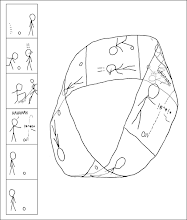Why Is Elon Musk Hiring Lobbyists In Texas?
5 hours ago
A microcosm of sanity in a macrocosm of retardation.
The Ship of Theseus Puzzle. The ancient historian Plutarch recounts the story of the famous ship of Theseus, which was displayed in Athens for many centuries. Over time, the ship's planks wore down and were gradually replaced. In the ancient world, the ship became “a standing example among the philosophers, for the logical question as to things that grow; one side holding that the ship remained the same, and the other contending it was not the same” (Clough 1859, p. 21). In the modern era, the case took on added interest, owing to a twist from Thomas Hobbes. Suppose that a custodian collects the original planks as they are removed from the ship and later puts them back together in the original arrangement. In this version of the story, we are left with two seafaring vessels, one on display in Athens and one in the possession of the custodian. But where is the famous Ship of Theseus? With the museum! After all, ships and other artifacts can survive the complete replacement of parts, provided that the change is sufficiently gradual. With the custodian! After all, ships and other artifacts can survive being disassembled and reassembled. Thus, at the end of the story, the ship of Theseus is present in two places at once. More generally, the argument suggests that it is possible for one material object to exist in two places at the same time. (We get an equally implausible result by working backwards: There are clearly two ships at the end of the story. Each of those ships was also around at the beginning of the story, for the reasons just given. So, at the beginning of the story, there were actually two ships of Theseus occupying the same place at the same time, one of which would go on to the museum and one of which would enter into the care of the custodian.)
